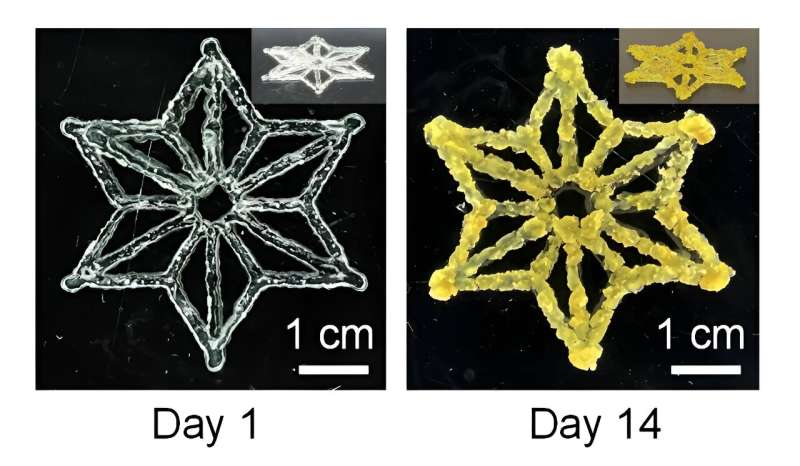Marriage of synthetic biology and 3D printing produces programmable living materials
Originally published by American Chemical Society, on May 1, 2024
Between day one (left) and day 14 (right), plant cells 3D printed in hydrogel grow and begin flourishing into yellow clusters. Credit: Adapted from ACS Central Science 2024, DOI: 10.1021/acscentsci.4c00338
Scientists are harnessing cells to make new types of materials that can grow, repair themselves and even respond to their environment. These solid "engineered living materials" are made by embedding cells in an inanimate matrix that's formed in a desired shape. Now, researchers report in ACS Central Science that they have 3D printed a bioink containing plant cells that were then genetically modified, producing programmable materials. Applications could someday include biomanufacturing and sustainable construction.
Recently, researchers have been developing engineered living materials, primarily relying on bacterial and fungal cells as the live component. But the unique features of plant cells have stirred enthusiasm for their use in engineered plant living materials (EPLMs). However, the plant cell-based materials created to date have had fairly simple structures and limited functionality.

Comments
Post a Comment